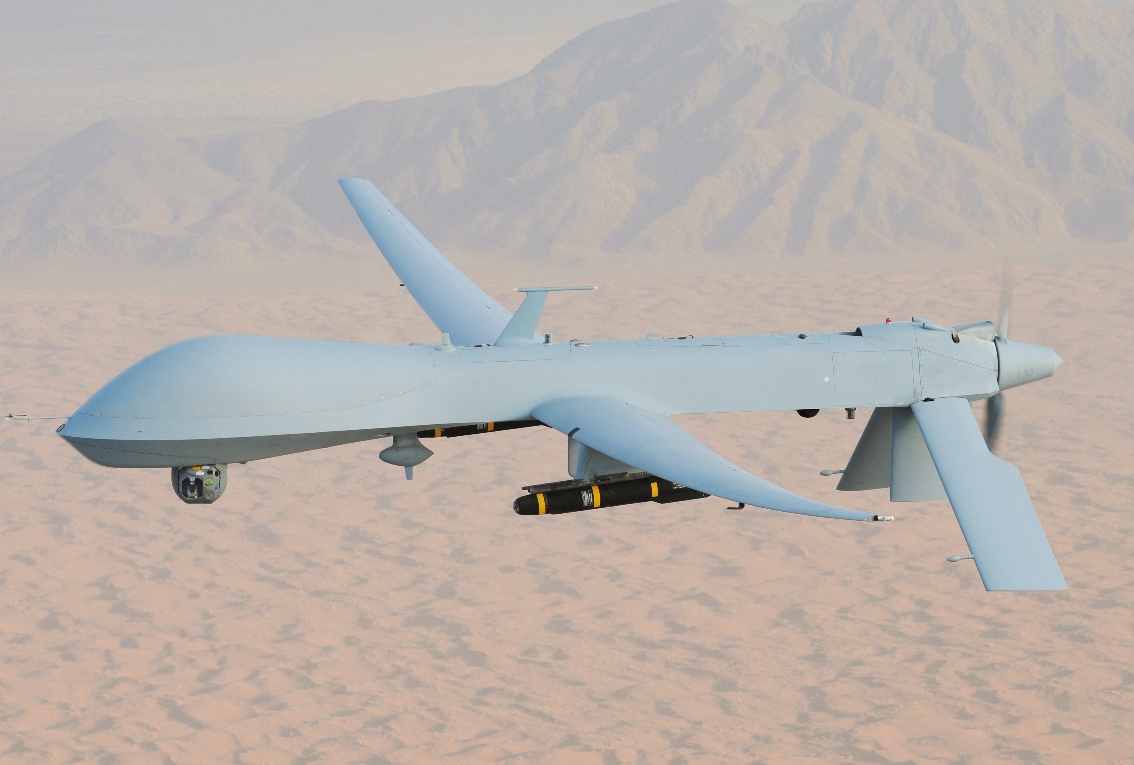In what will be a boost to the United Kingdom’s Royal Air Force, American drone heavyweight General Atomics successfully tested its Protector drone, which will be delivered to the British forces by 2021 as a replacement for their Reaper drones.
Why Is US Navy’s Whooping $13 Billion Aircraft Carrier Stuck In The Garage For Last 15 Years?
The San Diego-based General Atomics Aeronautical Systems Inc. (GA-ASI) completed the first flight of the Protector RG Mk1 Remotely Piloted Aircraft System (RPAS) in California with Britain now inching closer on welcoming a new family of long-endurance, medium-altitude drones to its homeland.
“It was exciting to see the first flight of MQ-9B in the Protector configuration. The Royal Air Force has been a great partner for GA-ASI for more than a decade. We’re thrilled to see this first customer aircraft completed and we look forward to delivering their Protector fleet and gaining more MQ-9B SkyGuardian customers in NATO and around the globe,” said GA-ASI President David R. Alexander.

The flight comes a little more than two months after the British Ministry of Defence announced that they had inked a £65 million ($83 million) contract with General Atomics to supply the first three of an expected fleet of at least 16 drones.
The MQ-9 platform which is currently the company’s premier RPAS is available in three configurations known as the Protector, the SkyGuardian and a navy-variant called SeaGuardian, which have all been developed as per the specifications of the British Ministry of Defence.
“Protector will be deployed in wide-ranging Intelligence, Surveillance, Target Acquisition and Reconnaissance (ISTAR) operations where its ability to fly consistently for up to 40 hours will offer a vastly improved ISTAR capability,”
Given that it is designed to fly in non-segregated, civil airspace, the Protector RPAS will be able to respond rapidly and offer flexibility, delivering many types of military or civil authority support missions, including search and rescue.” said Group Captain Shaun Gee, the Royal Air Force’s Director Air ISTAR Programmes.
The introduction of the new drones reflects a change in remotely piloted aircraft operations in Europe and across the rest of the world.
Designed as a further enhancement of the MQ-9 “Reaper” or commonly known as Predator-B UCAV, the MQ-9B RPAS system is a new advanced version expected to meet NATO- airworthiness standards as a “Type-Certifiable” system or (STANAG 4671) – certified to fly in civilian airspace.
The certification will enable SkyGuardian, SeaGuardian and other MQ-9B variants to operate in civil airspace and perform better border patrol while also lending a helping hand in fire detection, firefighting support, maritime patrol, and resource monitoring missions.
Moreover, the certification standard compliance is one of the competitive edges that the company’s drone fleet will have on top of pure performance and flight experience.
According to Defence Writer Caleb Larson, writing for the National Interest, the drones are a class apart in many parameters when compared to other UAVs.
“Other, non-American initiatives, such as the European MALE RPAS, or Medium-Altitude, Long Endurance Remotely Piloted Aircraft System would struggle to compete with platforms like the Protector in terms of performance, as well as in terms of certification,”
The joint French-German design is still in its infancy, and though intended to break the American domination of the high-end drone market, is unlikely to do so thanks in part to diverging design requirements among the multinational project’s members.” said Larson.